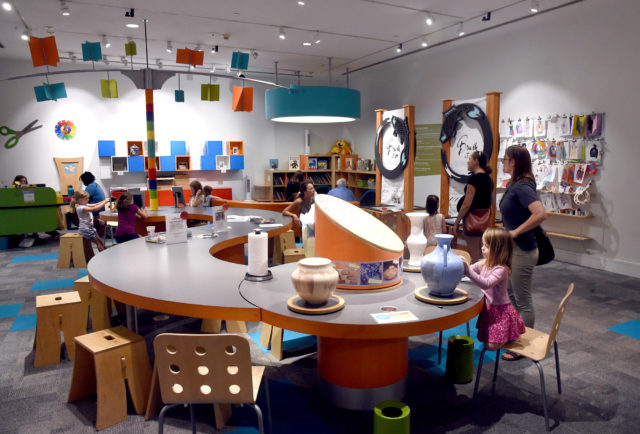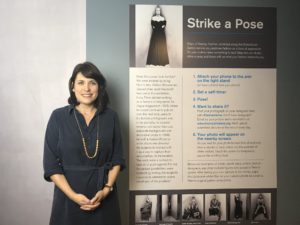
By Erica Wright
The Birmingham Times
The Birmingham Museum of Art (BMA) is more than just paintings, sculptures, and exhibits. Programming and education initiatives are also a large part of the institution, located at 2000 Rev. Abraham Woods Jr. Blvd., Birmingham, AL 35203.
BMA Curator of Education Rachel White said the museum’s education staff works with Birmingham City Schools and Jefferson County Schools to educate students about art.
“Some of my colleagues go out into the schools, think about what is being taught in classrooms, and connect the curriculum with our collection,” said White. “We also have a Teen BMA program, through which we work with about 30 different teens each year, so they can learn about a career in museums. They get to hear from different departments [in the museum]. They also give back by volunteering in different tracks, such as curatorial, if they’re interested in education and working with kids.”
Other programs include a Studio School, which offers art classes—including painting, drawing, printmaking, and pottery—for children and adults on weekdays and weekends, and Spanish Language Tours, which are conducted once a month. On August 24, the BMA will host Chocolate Milk Mommies, a Birmingham-based group that offers community support and educational resources promoting the benefits of breastfeeding and breast milk for babies.
One of the more compelling education initiatives took place last year, when the museum had an exhibition on a piece of art by artist Hank Willis Thomas called “Priceless,” which depicted the funeral of his cousin who had been shot. The event sparked conversation about gun violence.
“Using the artwork was a way for people to bounce ideas off of each other and talk through certain aspects,” White said. “Using the artwork kind of helped create a safe space to have that conversation.

“Originally, the photograph had been in the building and in galleries, and it was really traumatic for people to look at, to see, and to witness. We wanted to create a safe space to talk about gun violence in our community. We brought in three community activists, as well as Mr. Thomas, who talked about the origin of the work and why it was important to create it, and then talked about gun violence in Birmingham.”
The BMA also provides several digital offerings. The Smart Lab allows visitors to interact with the exhibition and actually get to be a part of the exhibitions.
“[Smart Lab] is a space for us to test new digital projects,” said White. “We [also] have a Sensory Empowerment Program for visitors with low or no vision to be able to touch artworks either replicated from our collection or inspired by our collection or even new objects created for them. … They can touch, smell, and interact with an object, even though they can’t necessarily see it.”
White and her team also created smartguide, an online instruction for visitors to learn more about art in the museum.
“There is a small number on the bottom of labels you may see throughout the museum. If you go to our website, type in the number, and click it, you can hear audio, [get] a quick guide to the artwork, quick facts, and even video,” said White. “This is a way to have another form of engagement, even though the artwork is in front of you. … Some people just want to look. Some people just want to read the label. Some people want to a deep dive. The smartguide is your opportunity to do a deep dive into a work of art.”
For more information about the Birmingham Museum of Art’s smartguide, visit www.artsbma.org/art/smartguide.
To read more stories about the BMA, click one of the links below.
BMA’s Barbie Exhibit: How Society Views Beauty and Women of Color
After Overseeing Dozens of Exhibitions, Curator Emily Hanna Ready To Arrange Her Own



